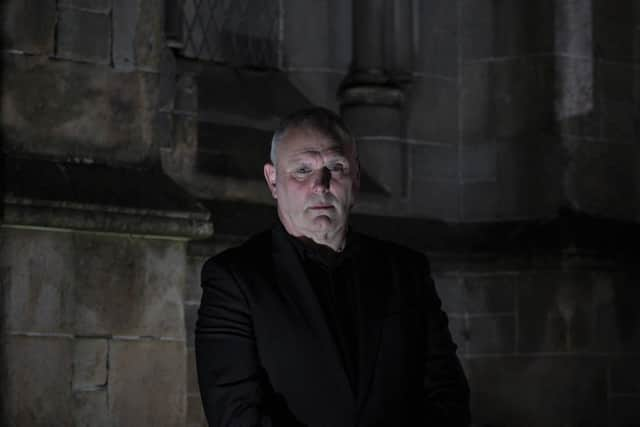Book review: Westerwick, by George Paterson
Horror seems to me to be the most problematic and least considered of genres (and I would include in that sweeping statement the estimation of “romance”, which, pace Jenny Colgan, at least is taken seriously as an indicator of social mores). It would be foolish to exclude horror from literature when works such as Frankenstein, or the Modern Prometheus, Dracula, The Fall Of The House Of Usher, Strange Case of Dr Jekyll and Mr Hyde and The Island of Doctor Moreau are clearly canonical. Other works – those by H P Lovecraft, Marie Corelli, Arthur Machen, William Hope Hodgson, Allain & Souvestre and others – occupy (perhaps fittingly) a kind of shadowy half-world on literature’s verges.
In terms of contemporary writing, the situation is even more fraught. Out of either research or mischief I decided to take a look at the first couple of pages on Amazon if I searched for “horror books”. Three of the top ten (The Cottage, The Whistling and Don’t Look Back) had almost identical covers – house, hill, black and white. Stephen King was the first name I recognised and had read; some were worryingly boasting “Graphic Content Extreme Horror”, another is gleefully emblazoned “consider this a trigger warning for just about everything”. For some reason best known to Amazon’s eldritch algorithms, Bob Mortimer’s Wodehouse / Bollinger comic novel winner, The Satsuma Complex, was also listed.
Advertisement
Hide AdThe problem can be boiled down to a relatively simple question: what does the horror novel try to generate in the reader? The simplest answer would be fear, but fear is not a simple proposition. The fear created by Shirley Jackson’s The Haunting of Hill House or Harriet Waugh’s too-little-known Kate’s House is a different kettle of coconuts entirely from Clive Barker’s The Hell-bound Heart or James Herbert’s The Fog. Like all literary distinctions it has a tendency to fray. It is not as clear cut as whether you get gooseflesh or retch. Brian Evenson, whose works include Altmann’s Tongue, has certainly given me retroperistalsis. I also consider him to be a genius.


So where does the reader situate George Paterson’s Westerwick? The blurb claims it is a “claustrophobic tale of the macabre and the malevolent, serving as both an urban gothic satire and a record of modern devilry”. Its endorsements opine that the author is “one of the boldest voices in Scottish writing” and that the novel is “sensual, shocking, terrifying and terrific”. Previous work was nominated for the Bloody Scotland Debut Novel of the Year.
The plot involves a lawyer, Thomas Leven, who is recuperating from a car accident. His reliance on morphine perhaps makes him less than ideal to debrief a prisoner who asks specifically for him, a serial killer who escaped from a high security prison and then turned himself in many years later, but on we go. The murderer, MacMillan, confesses to having been involved in some Satanic shenanigans at university, and the descriptions of the orgiastic cult are rather sub-Dennis Wheatley. The “descent into madness” is predictable and strangely hurried. This form of plot requires patient seeding and tight restraint, but here it is signalled rather too obviously.
Most horror writing tends towards the terse, but the prose here suffers from a certain heaviness. Sample sentence: “No-one in the firm had ever explicitly confirmed it but Thomas held the view that, for a partnership which defended some of the most heinous people the country had to offer, the optics of the refurb weren’t as much to do with civic image as a regular opportunity for Kunis Clement to wipe the stain of human detritus from its surfaces”. (Their ghastly clientele includes, we are told, “child murderers, celebrity rapists, corporate plunderers and footballers”. I have no interest in the so-called beautiful game, but that seems a little harsh.)
Particularly in horror writing, the management of the reader’s “willing suspension of disbelief” is crucial. The characters here stubbornly remain as “characters”, and the reader has so little investment in them emotionally it wouldn’t really matter if they were dragged into the infernal abyss or not. The women are all introduced by listing physical features and the men fare little better.
There are good examples of contemporary Scottish horror but they tend to be subtler and more ambiguous – novels such as Alice Thompson’s Justine or John Herdman’s Ghostwriting – or even just unclassifiably eerie like Frank Kuppner’s A Very Quiet Street. This has a refrain – “God is dead and magic is afoot”. It sounds portentous but is meaningless. If magic is afoot, it is limping.
Westerwick, by George Paterson, Into Books, £10.99